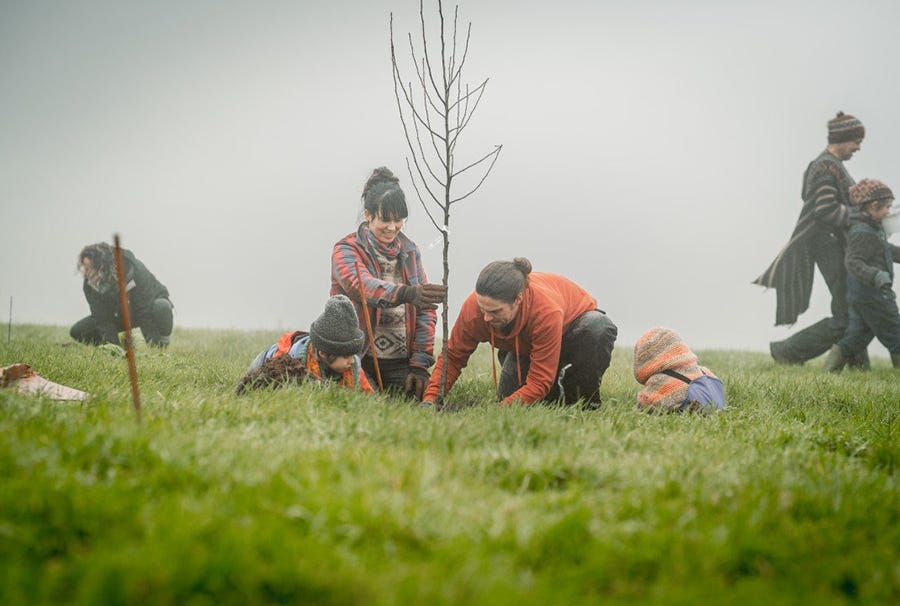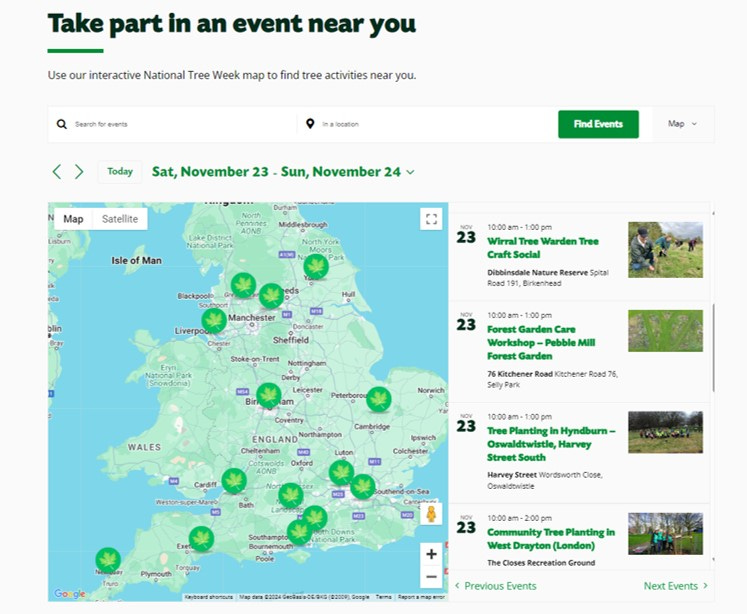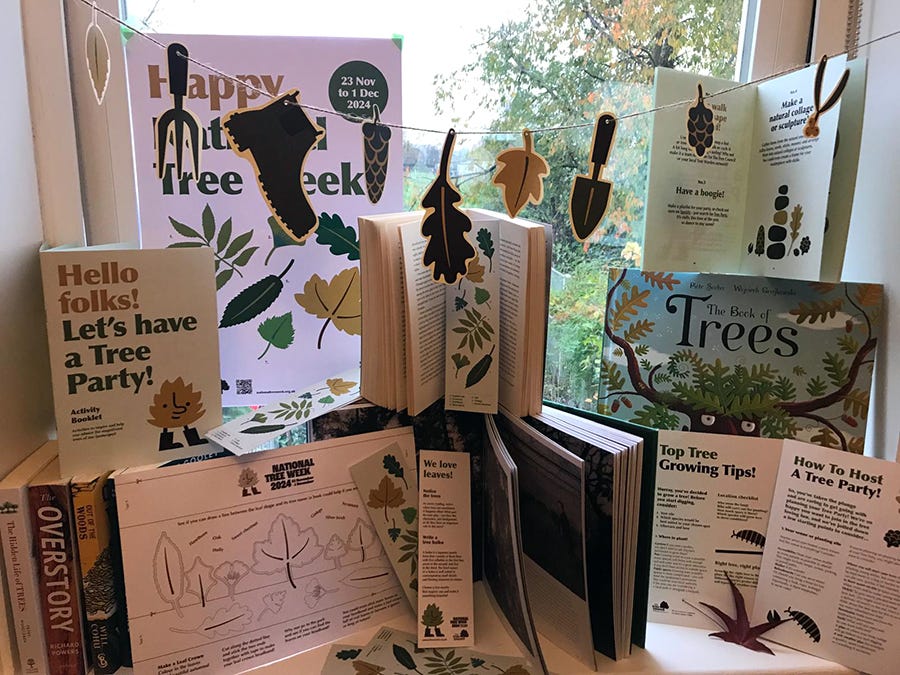National Tree Week, the UK’s biggest celebration of trees, is fast approaching and here at The Tree Council we want as many people as possible to connect with, learn more about, benefit from, and maybe even help plant, the trees that deliver so much for us all.
Traditionally marking the start of the winter tree planting season, National Tree Week (NTW) is now just shy of its 50th year and brings brilliant focus to the urgent need to establish trees across a country that currently only boasts around 13% canopy cover – against a European average of 46%.
To help connect people and trees, The Tree Council’s official NTW webpage – www.nationaltreeweek.org.uk – is seeking to become the one stop shop for all planting opportunities, events, talks, tours and more, taking place throughout the UK during NTW. We’ve developed an interactive map to help search in your local area. And we are still accepting submissions.
If you, or the organisation you work for, or are affiliated with, has plans for NTW, simply fill in this quick form and all the information will be made available on www.nationaltreeweek.org.uk, with visitors sent back to the link you provide for further details or to make reservations.
And, of course, if you are looking for tree planting opportunities, tree related events, talks, tours or more, taking place in your local area, simply visit the page and search the map!
For those unable to take part in tree planting, we have developed a suite of Tree Party materials to help people notice and celebrate the trees in their lives.
This year, we are disseminating printed versions (on sustainable paper with vegetable based inks!) to libraries all across England, Scotland and Wales to create lovely tree themed displays in these important and well-visited community hubs. Tree Party packs contain activity booklets, posters, colouring in sheets and even special NTW bookmarks and tree themed reading lists.
And, of course, The Tree Council is running lively and informative free, online Tree Talks!
On Wednesday November 27, natural navigator, Tristan Gooley joins The Tree Council’s Director of Trees, Science & Research, Jon Stokes for Reading Trees, an in conversation event based on Tristan’s latest book. Regular Tree Talk readers will be familiar with the work from the special Tree Talk edition created by Tristan earlier this year.
Continuing the theme, Thursday’s event is Writing Trees, with Wyl Menmuir and Amy-Jane Beer. The two authors will share their passion for trees and how they inspire and interact with their artistic craft, in conversation with The Tree Council CEO, Sara Lom.
The final event, on Friday November 29, will consider Heritage Trees and reveal insights into work The Tree Council has been engaged in with Woodland Trust and other partners, to visit and assess the condition of all the trees featured in Jon Stokes’ Heritage Trees of Britain and Northern Ireland, 20 years on from publication.
We are also delighted to be working with our friends at Network Rail and JC Decaux to deliver a national outdoor advertising campaign featured at railway stations throughout the UK, from Edinburgh to Liverpool to London Waterloo, in support of National Tree Week and the stars of the show: our wonderful trees.
National Tree Week 2024 runs from November 23 to December 1. To find out more, please visit www.nationaltreeweek.org.uk
MORE: How to Read a Tree: Southern Eyes - by Tristan Gooley







Ginkgo trees are actually the only living member of their genus, family, order, class, division this means they have no close living relatives. Ginkgo trees have been around for 270 million years and barely changed the dinosaurs used to munch the leaves! Ginkgo trees are native to China and actually endangered in the wild they grow in small isolated populations that are at risk for extinction due to climate change and habitat loss. Ginkgo trees are non invasive when grown in other places. Female ginkgo trees are actually a good thing because they make seeds which is good for genetic diversity. Seeds have higher genetic diversity because seeds have genetic recombination and genetic crossing and increased chances for mutations. Genetic diversity is important. Unfortunately ginkgo trees are commonly grown as male clones/cultivars these are all clones of one tree. This means that if one is susceptible to a disease then all of them are while no serious disease infects ginkgo trees now diseases mutate and evolve fast. So it’s better to be safe than sorry. The gros michel banana was grown as a cultivar/clone a disease could kill one and it spread and killed almost every banana plant because they were all clones and lacked genetic diversity the gros michel banana nearly got wiped out. Female ginkgo trees are also good because they actually have sticky cones that don’t make pollen and actually absorb male pollen in spring reducing allergies. Male ginkgo trees are important as well because without their pollen female ginkgo trees won’t make seeds.
Sounds great!